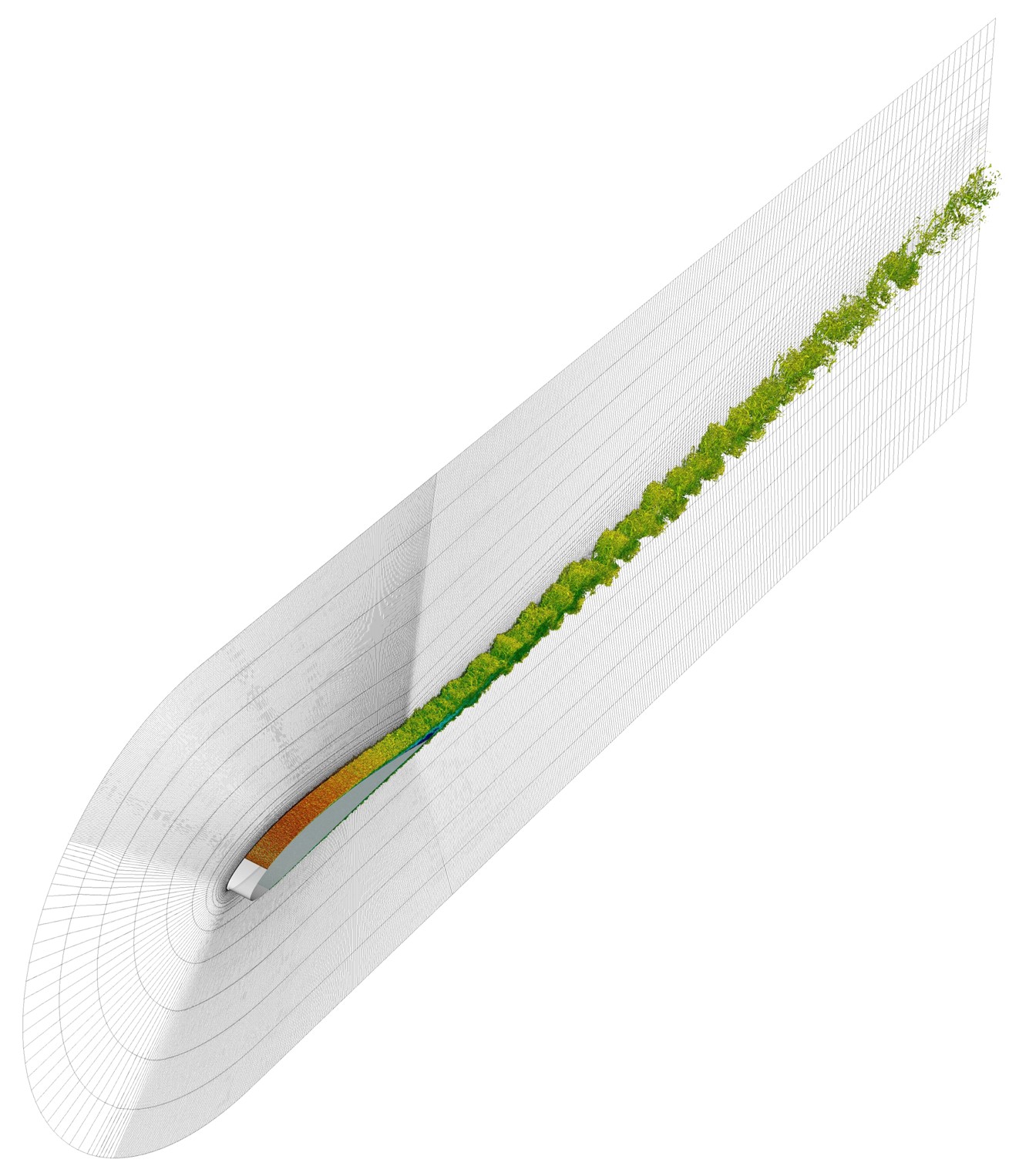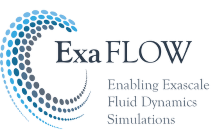Download material on "ExaFLOW use case for SBLI: numerical simulation of the compressible flow over a NACA-4412 airfoil at incidence"
Wing profile NACA4412 in incompressible flow: The flow over aircraft wings is, for obvious reasons, a very important use case for any type of scale-resolved numerical simulation. The improved understanding of the complex physical behaviour of the turbulence will pave the way to improved engineering design, including:
i) reduced air resistance and thus lower fuel consumption,
ii) increased robustness of wings with respect to external influences such as atmospheric turbulence, high angles of attack, icing,
iii) improved wing characteristics such as lower landing speeds,
iv) better flow quality along the wing and thus more effective control surfaces.
The flow along an airfoil is subject to a number of highly relevant and only partially understood physical phenomena; transition to turbulence close to the leading edge, turbulent boundary layers under adverse and favourable pressure gradients, potential flow separation close to the trailing edge, and finally free turbulence in the wake. All these aspects have so far only been studied in isolated test cases, and shall now be put together into one case, where their interaction is investigated. The high Reynolds number characteristic of airfoil flows poses another difficulty, in particular because there are clear differences between the flow at low Reynolds number and higher ones; therefore, any upscaling method is bound to fail.
For the present use case, we will consider an idealised NACA4412 wing profile, which is a generic geometry frequently used as an industrial and academic test case to validate simulation and experimental methods. The spanwise direction will initially be based on periodic boundary conditions, but at a later stage will be supplemented with wing tips, which will allow us to study end effects (note that this region is crucial when it comes to drag reduction of wings). Looking toward exascale computing (and further) the challenge is to run this sort of test case at Reynolds numbers of O(106-107), with different approaches including DNS, LES with resolved near-wall layers and LES with wall models (including heterogeneous models as discussed in the proposal).
To study fundamental aspects of fluid turbulence at low speeds, in particular in complex geometries, the incompressible approximation has a number of both numerical and physical advantages. For the present case, we will use Nek5000 to simulate the airflow along a wing section; such a resolved DNS will require about 10-100 billion grid points. The adaptive mesh strategy will thus be of particular importance in the turbulent wake of the airfoil where little information about the flow is known.
The proposed simulations will be compared with planned experiments in the KTH wind tunnel at comparable Reynolds numbers.

Figure 1: Turbulent structures extracted from the incompressible NACA4412 wing case
NACA4412 in compressible flow: In this use case we adopt the NACA4412 airfoil in compressible subsonic flow. In the compressible flow case exhibits aspects of hyperbolic behaviour and sustains sound waves that are not resolved in incompressible flows. This change leads to very different numerical algorithms, since the divergence-free constraint on the velocity is removed. It is important to assess the scaling to exa-scale for such cases to compare the requirements with those of incompressible flow. The compressible flow solution include the acoustic field, making possible predictions of the aeroacoustic properties of airfoils. The use case considers a representative airfoil showing laminar separation, vortex shedding and sound generation from the trailing edge. The objective of the numerical approach is to efficiently resolve both the hydrodynamic near field and the acoustic far field, which have different grid requirement. The use case contains an example of initially two-dimensional flow with a variable spanwise extent that can be adjusted to consider strong and weak scaling.

Figure 2: Instantaneous contours of spanwise vorticity from a simulation of air flow past a NACA-4412 airfoil
CODES USED: Nek5000, SBLI



